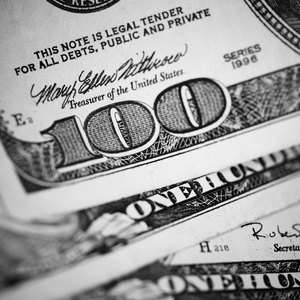
Treasury bills, which are commonly referred to as "T-bills," are investment bills sold by the U.S. government. An individual purchases a treasury bill at a rate that usually is lower than the "par amount" or full value of the bill upon its maturity. Treasury bills are a favored type of investment because they are relatively safe, the interest is tax-free and they are more liquid than some other investment purchases. Being liquid means they aren't tied up as long as many other types of investments. The maturity date ranges from four to 52 weeks after the purchase date. To calculate the purchase price of a Treasury bill, you need to know the interest rate.
Write down the par value of the bill. You might have a bill for $5,000, for example.
Convert the percentage rate on the bill to a decimal. The government sets percentage rates for non-competitive treasury bills. More-savvy investors and corporations bid on competitive treasury bills based on percentage rates that they decide to be competitive. With either type of percentage rate, you divide the percent times 100 to convert it to a decimal. For example, if a treasury bill has a percentage return of 2 percent, you would divide 2 by 100 to get 0.02.
Multiply the percent in decimal form times the par value of the bill. In this example, you would multiply $5,000 times 0.02 to get 100.
Subtract your answer from Step 3 from the par value of the bill to calculate the purchase price. In this example, you would subtract $100 from $5,000 to get a purchase price of $4,900.
References
Writer Bio
Charlotte Johnson is a musician, teacher and writer with a master's degree in education. She has contributed to a variety of websites, specializing in health, education, the arts, home and garden, animals and parenting.

